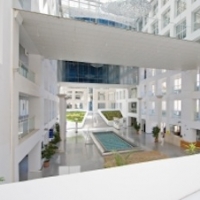How Office Space Affects Team Member Collaboration

Collaboration is an essential element of an effective agile team. One thing that affects how well teams can collaborate is the structure of an organization. Thomas Allen described a model for this in 2001. Physical office space plays an important organizational role, and the merits of open-space versus closed-space offices is a common topic of conversation and speculation, judging from the research on this topic.
The value of open spaces seems to be a point of discussion in the offices of Fast Company, as reflected in a series of articles that go back and forth on the goodness and badness of open offices. In the first article, Jason Feifer tries to make a case that open offices reduce productivity and actually reduce interaction.
In a subsequent article, Anjali Mullany makes a case that it is the company's office doors that make interaction difficult, and introverts actually suffer more because of this. Mullany’s argument seems more reasonable; she points out that the real question shouldn't be centered on open or closed offices, it’s how you design them.
Mullany advocates for a mix of spaces, with the whole office designed with a goal in mind. And, she points out an obvious fact that most space designers seem to ignore: cubicle walls that you can’t see over are just bad as they only give an illusion of acoustic privacy.
Throughout both Fast Company articles is the question of the role of electronic versus face-to-face communication. Glen Hiemstra points out the seemingly obvious fact that teams need a mix of communication media for different types of tasks.
Again, this isn’t a new finding. Research from 2000 pointed out that distance communication isn’t ideal and, where unavoidable, can be improved by forming connections between teams via face-to face visits.
Balancing the different constraints when allocating office space is tricky, and there is no one right answer. When making major layout decisions, the best approach seems to be to engage the people who will be working in the space and allow for a mix of spaces that enables the different types of interactions that teams need.
Does your office layout work for your team? Who made the decisions about how and where people sit? Share your experiences in the comments.

